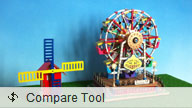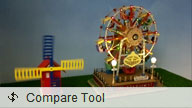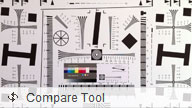Nokia N8 review: Director of photography
Director of photography
720p Video recording
With the still camera champion title already in the bag, the Nokia N8 is going to give a try and claim the camcorder cup too. It can capture 720p (1280x720 pixels) videos at 25 frames per second, which sounds like good base for success.
Update, 24.08.2011: We installed the latest Nokia N8 camera update - check out our impressions of the new 30fps videos and continuous autofocus on Page 11.
Sure, you have every right to argue that 720p@30 fps is better, but you should also remember that big-screen movies are shot at 24 fps and no one complains about that. Plus it’s quite important to note that Nokia N8 is able to maintain its framerate even in very dynamic situations so you won’t see much jerkiness here.
Yet if we had to pick one feature that sets the Nokia N8 videos apart and gives it quite an edge against the competition it’d be the 3x digital zoom. Unlike its competitors the N8 uses the full resolution of the 12MP sensor and retains the HD quality even at full zoom. Digital zoom might make no sense in still imaging, but it works great on video and it’s great someone has finally made good use of it.
We tested the Nokia N8 digital zoom extensively and we can safely conclude that it works exactly as promised, except in really low light environments, where zooming results in increased noise levels.
With the optical zoom modules too thick for the modern cameraphones this looks like the way to go. The only bad thing we can say about the feature is that it doesn’t work as good in the range of 1x-2x, because of the limitations of the Nokia N8 12MP sensor. You can check our Nokia N8 preview for a demonstration and detailed explanation of the issue.
Another quite unique feature of the video recorder in Nokia N8 is the stereo audio recording. It uses the second, noise cancellation microphone and records excellent stereo sound to go with the sweet footage.
To give you a proper idea of the quality of the videos recorded with the Nokia N8 we prepared two brief shootout videos. The first one puts the N8 head-to-head with the Samsung S8500 Wave, which sports one of the best HD camcorders among cameraphones.
Update 19 Oct: The framerate of the Wave videos is 29.97 fps, while the Nokia N8 records at 25 fps. When we originally published the review we had the N8 recording converted to 29.97fps but since that put it in somewhat disadvantageous position, we decided to go the opposite way.
We converted the Wave videos down to 25fps. That makes those slightly jerky, but again don't compare framerates and try to focus on the image quality and the exposure shifts instead. Also bear in mind that the YouTube compression has added some additional artifacts, which don’t exist in the original videos.
>
Nokia N8 has a wider field of view, so it fits more in the frame and of course the objects look smaller. Regardless, you can easily tell that it offers better resolution and a lot better dynamic range. The colors are a matter of personal preference, but we tend to like the N8 approach a tad better.
Here is the second comparison, this time with Apple iPhone 4. Again, we've converted the iPhone4 videos to 25fps so hence the jerkiness. IT IS NOT the iPhone's real-life performance. Make sure you focus your attention on image quality, dynamic range and exposure shifts instead.
The difference in the field of view is even bigger this time, so the objects in the iPhone 4 half are a lot bigger and the resolution comparison is harder. Fortunately, we have already tested the video resolution in our preview and concluded that iPhone 4 has the upper hand there.
However, there is a lot more than resolution when we talk about video. The colors in Nokia N8 are a lot more natural, while the oversaturated output of Apple iPhone 4 might look good in a dull weather, but creates all kinds of problems with subjects, which are already colorful. The effect puts an unnatural yellow cast over all subjects and the objects that are already yellow to begin with are often overexposed. The sky suffers as well – with the blues coming out rather unnatural.
Next up, the Nokia N8 has a much better dynamic range – there are almost no overexposed areas in the above movie. In the iPhone 4 samples on the other hand, overexposure is a common issue.
There is one more thing we want to point out in this sample. Look at how the two cameraphones react to the rapidly changing scene in the beginning (sorry for the mad panning, but we had to make a point there). You can clearly see the iPhone 4 reacts a bit slower than the N8 followed by a jerky exposure changes that don’t look so good. The Nokia N8 on the other hand does the exposure compensation so smoothly that you can hardly see it move.
The N8 video recording is not withot its flaws too. As you may already know, the Nokia N8 doesn’t use autofocus in video recording. Instead, the Finns chose to use something they call Active Hyper Focal Distance system. In theory, it should allow for videos that have everything in focus from front to back – as long as the subject you’re shooting is more than 60 cm away from the camera.
Our tests however showed that perfect focus ranges from 1m to infinity and this does make a difference, especially with a wide-angle lens like this one. To see the downsides of this approach, we’ve prepared another video sample.
In the beginning, the performer is not really tack sharp. We can easily prove this with a quick jump to the maximum digital magnification the camera offers. Towards the end of the video we take a step back and presto, the performer gets really sharp.
Of course that same top-notch digital zooming method is the workaround for the longer minimum focus distance. You should simply zoom in on your subject instead of going closer. It sounds quite logical, but it needs getting used to. We would have liked it better if Nokia gave us some way of autofocusing. It doesn’t have to be continuous autofocus for the entire video – it can just as well auto focus before you start recording.
Generally we are very pleased with the Nokia N8 video recording capabilities. The clever, HD quality retaining digital zoom alone was enough to impress us but the N8 didn’t stop there. The resolution it offers is high and the dynamic range is just great. The dynamic adjustment to drastic scene changes is fast, but unobtrusive - simply the best we’ve seen on a mobile. If there were an option for auto or touch focus it could have been perfect.
And here’s a 720p video sample from our new test setup. Pay attention to the second half of the video where we lower the light to show you how the the camcorder performs in more challenging conditions.
Video quality comparison
The Nokia N8 was also included in our Video Compare Tool database. Check it out – the tool’s page includes a quick walkthrough on how to use it and what to look for.
Reader comments
- Anonymous
- 07 Feb 2025
- gq9
Yes it can be replaced if you're handy, it's not that difficult like the current phones. A good torx screwdriver and a new battery and you can replace the battery.
- Anonymous
- 07 Nov 2024
- fnE
My Nokia N8 went off how can i recover data from its hard disk
- Anonymous
- 20 Jan 2024
- vaS
>Battery is not user-replaceable I didn't know they posted something like this. Turns out you only need to loosen 1 screw on top and the top part opens. Just be careful with the ribbon.



